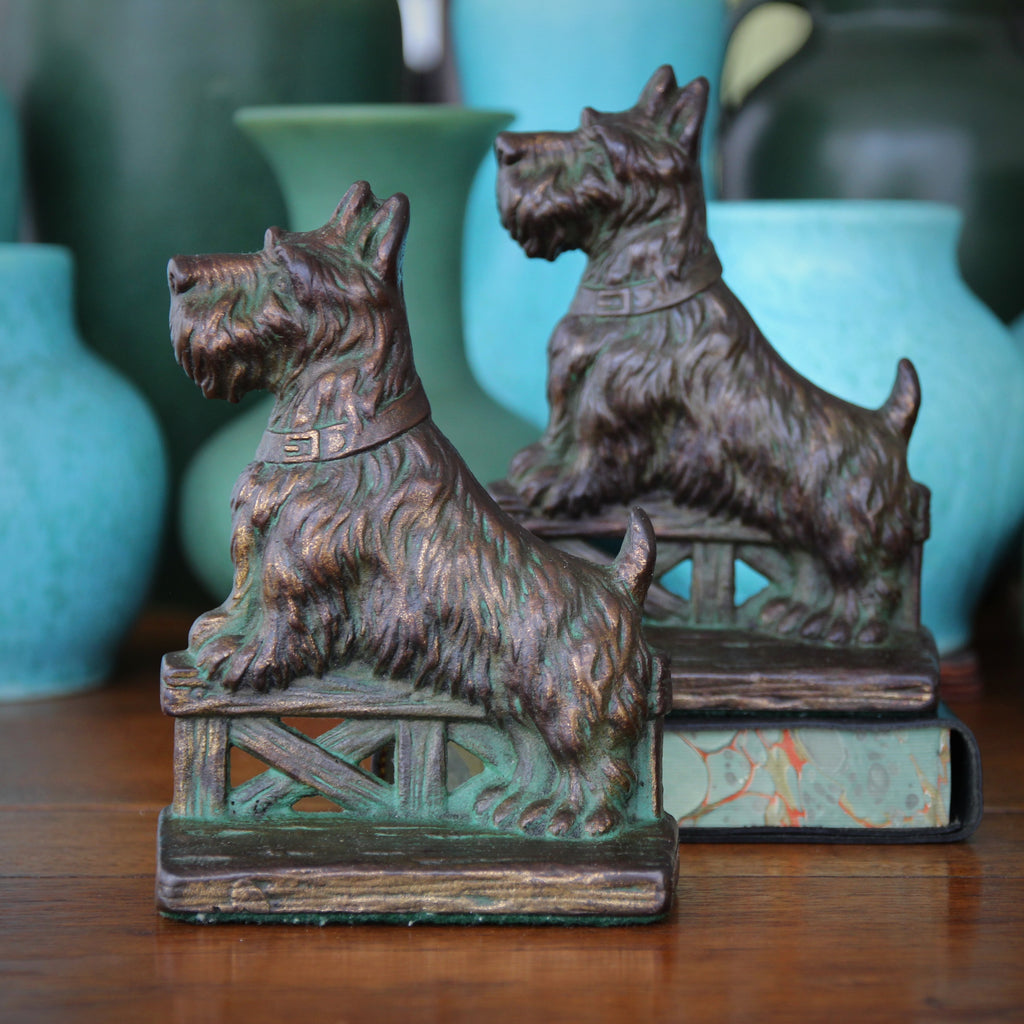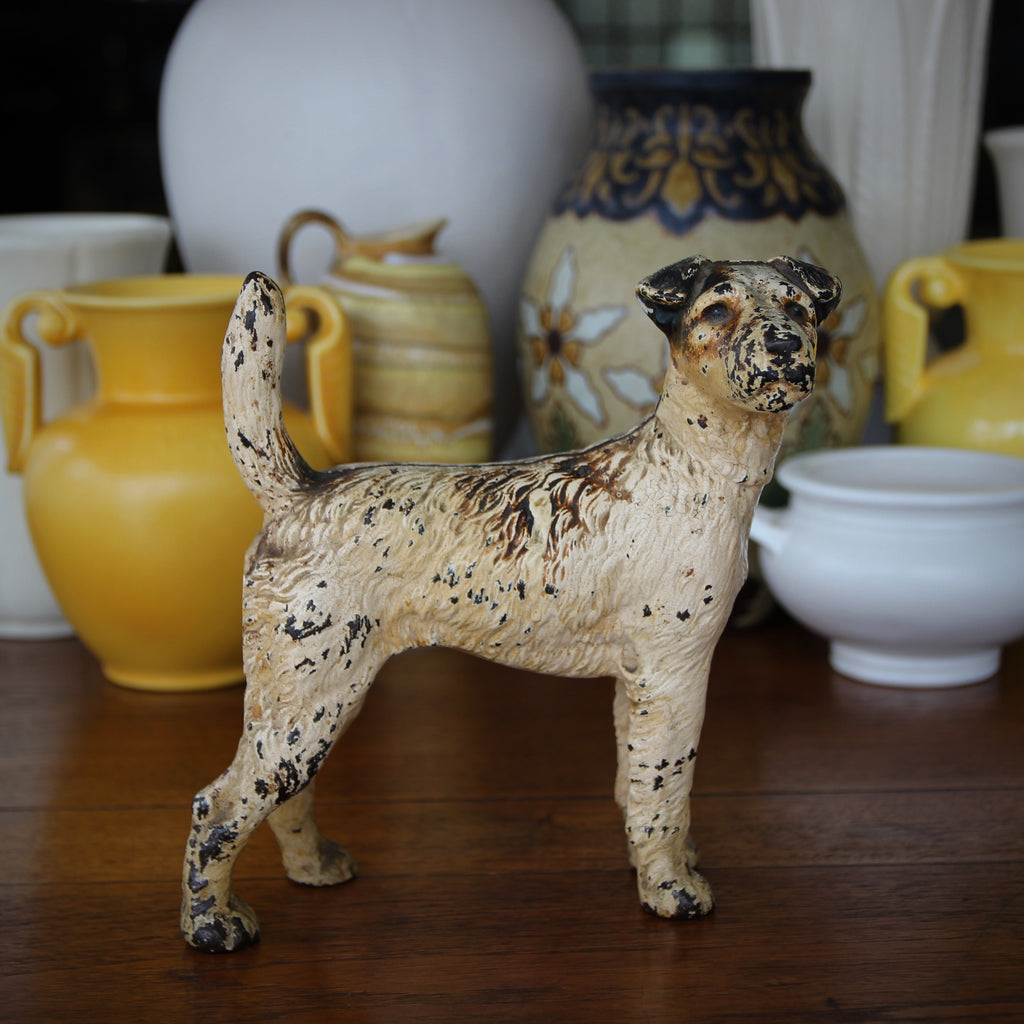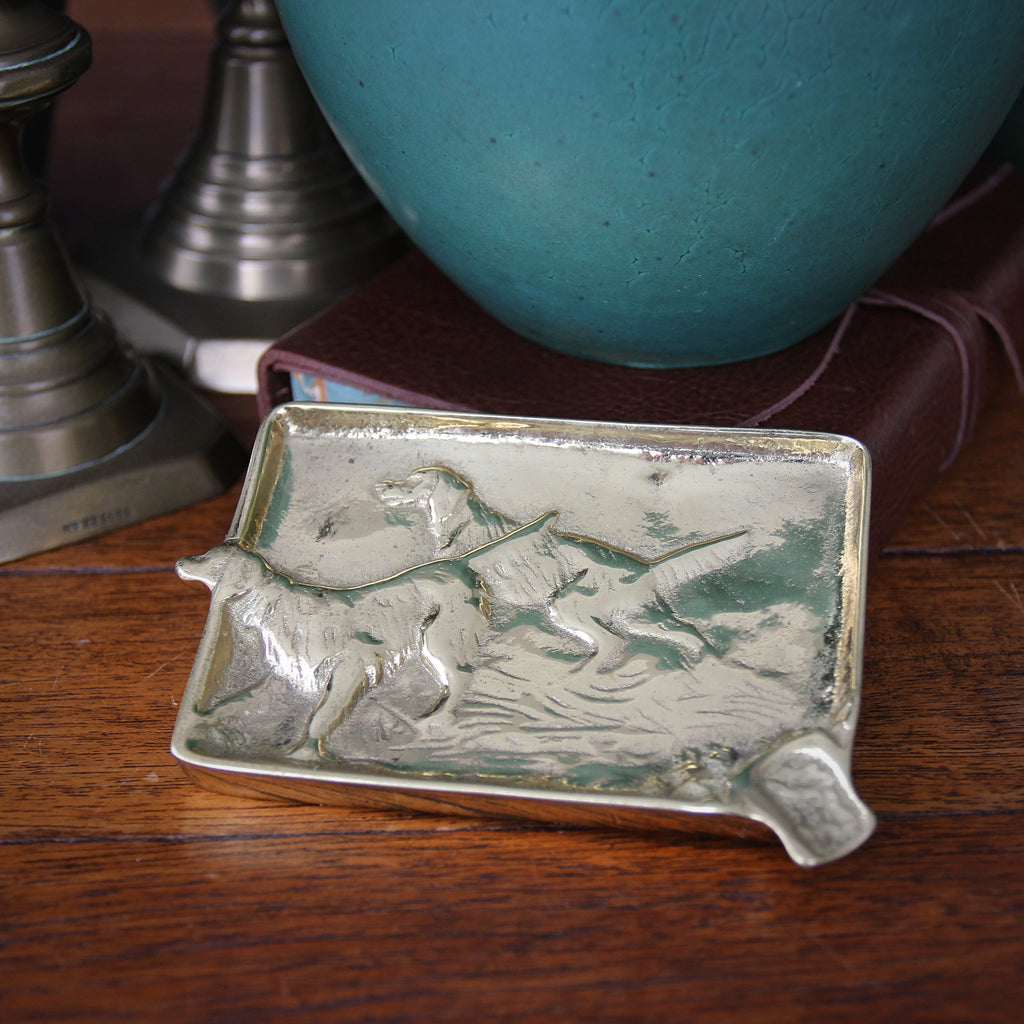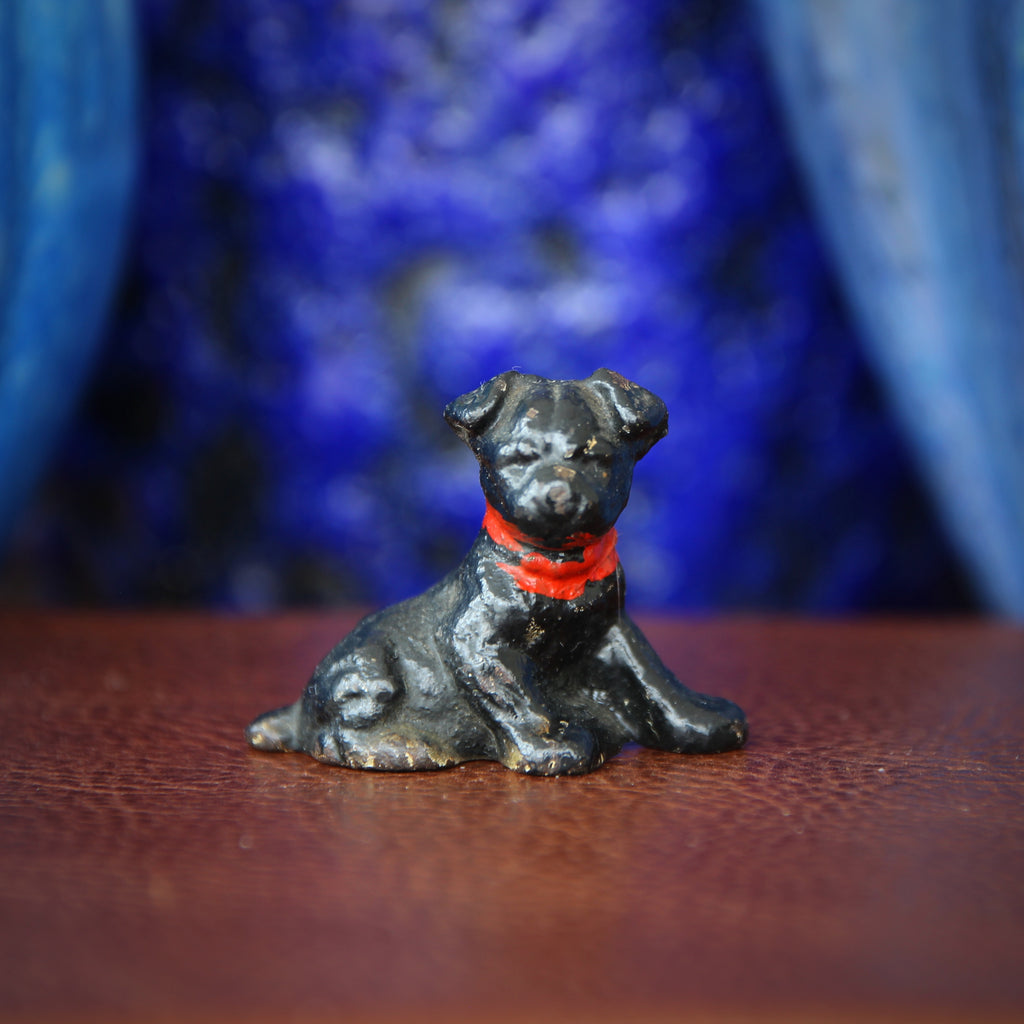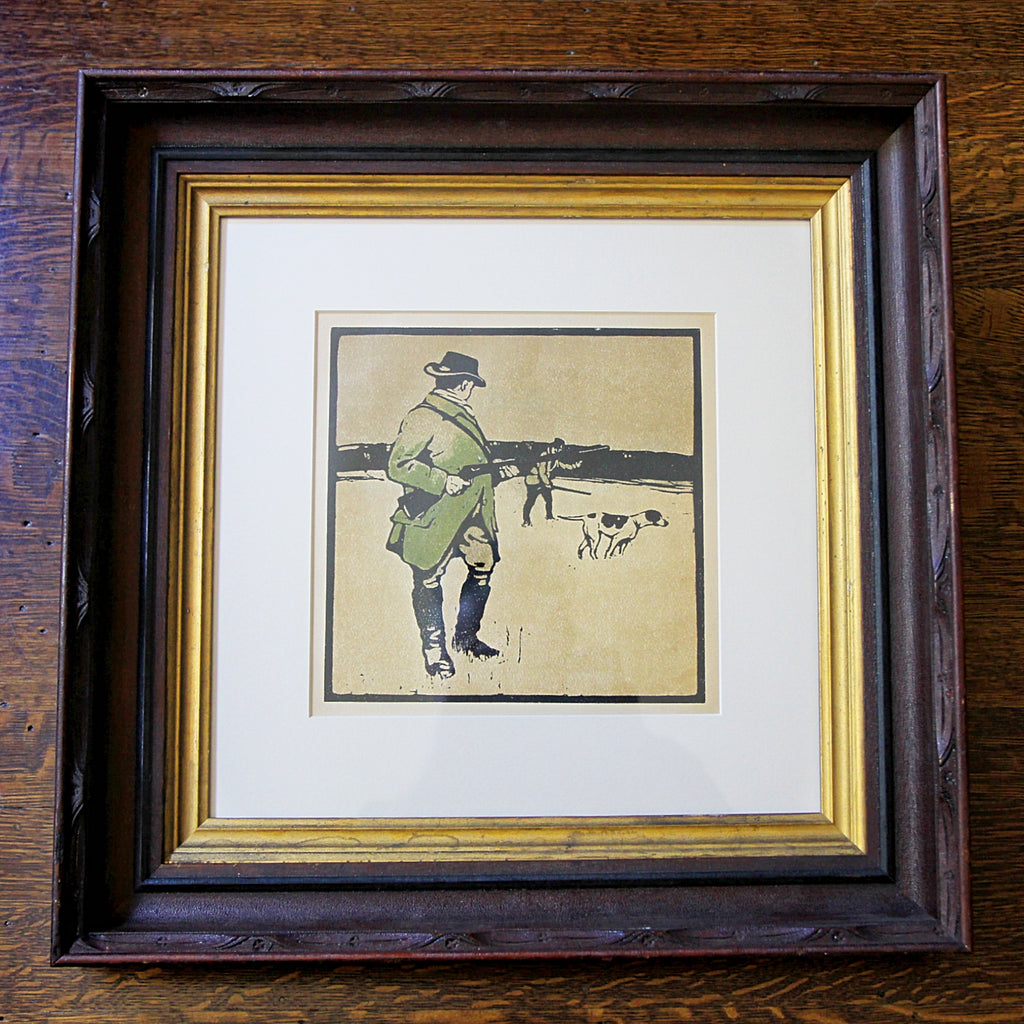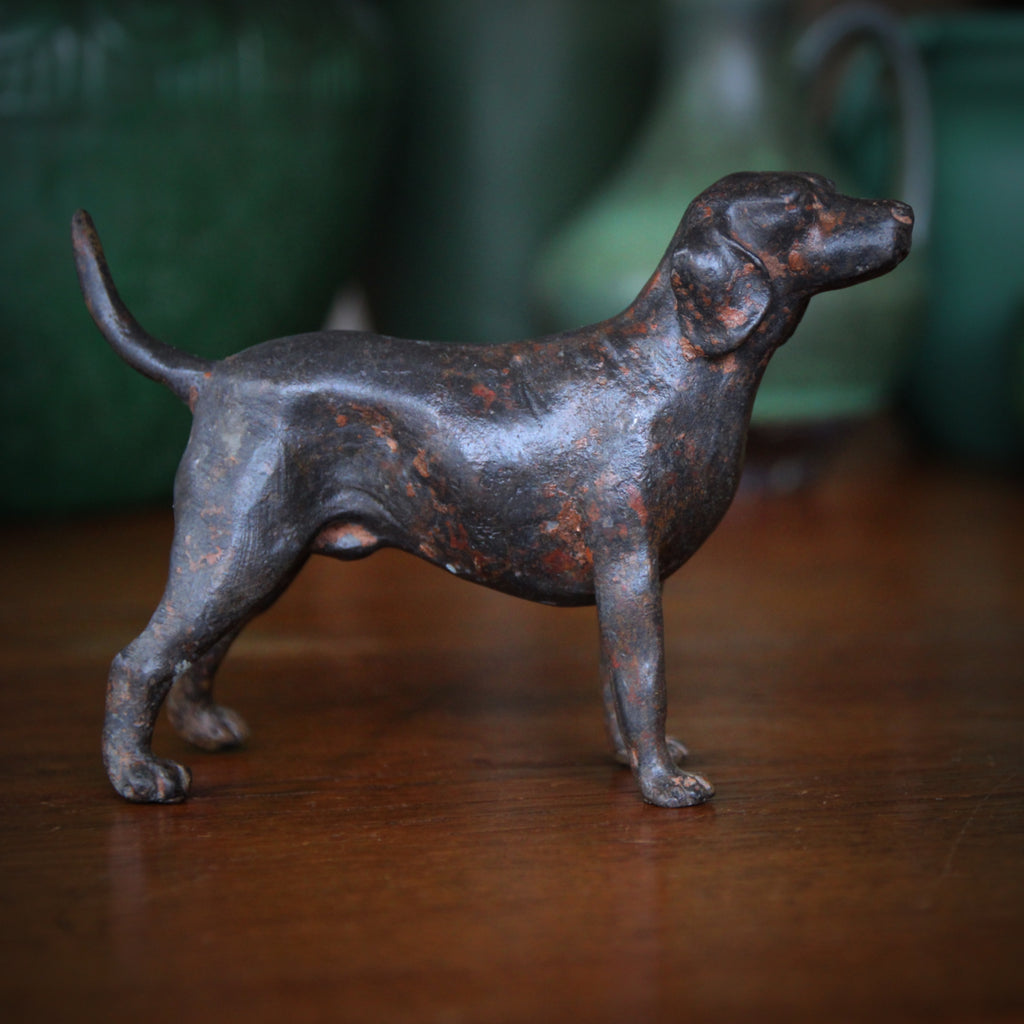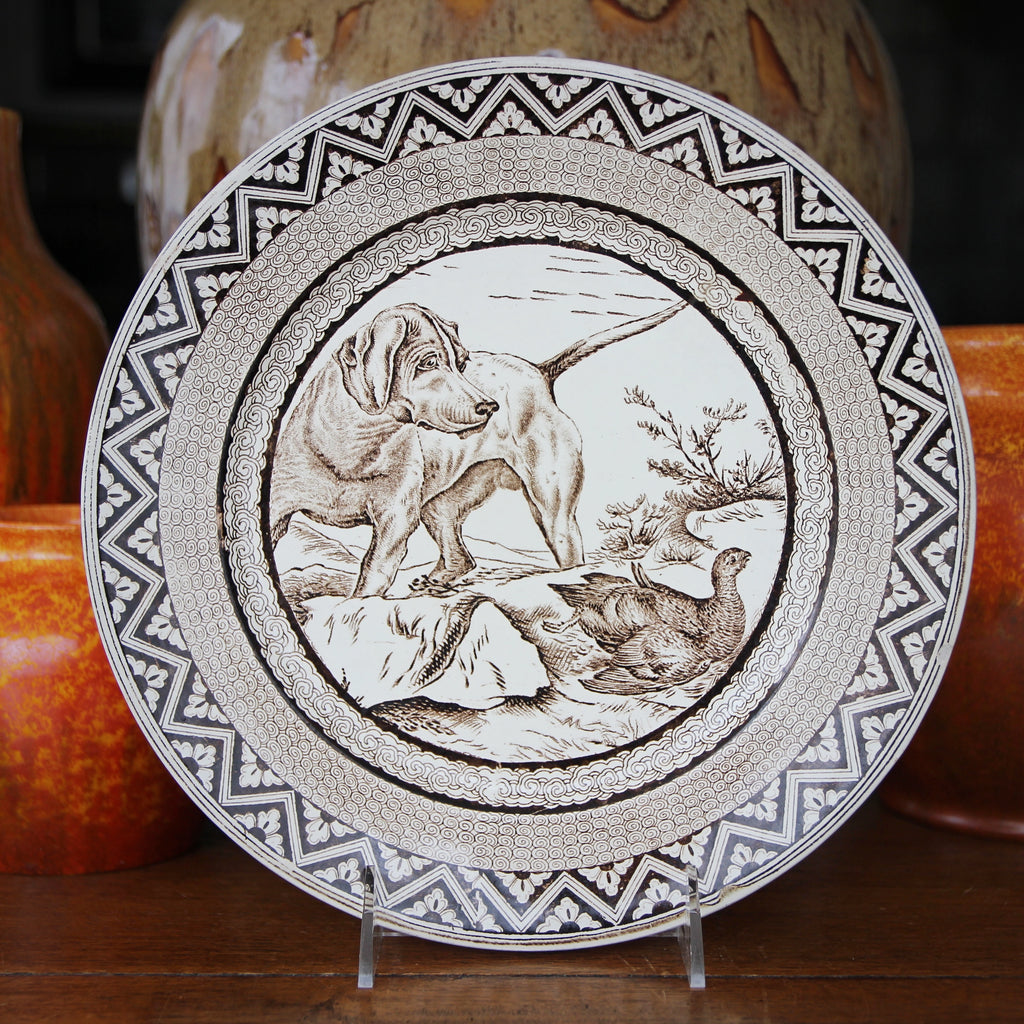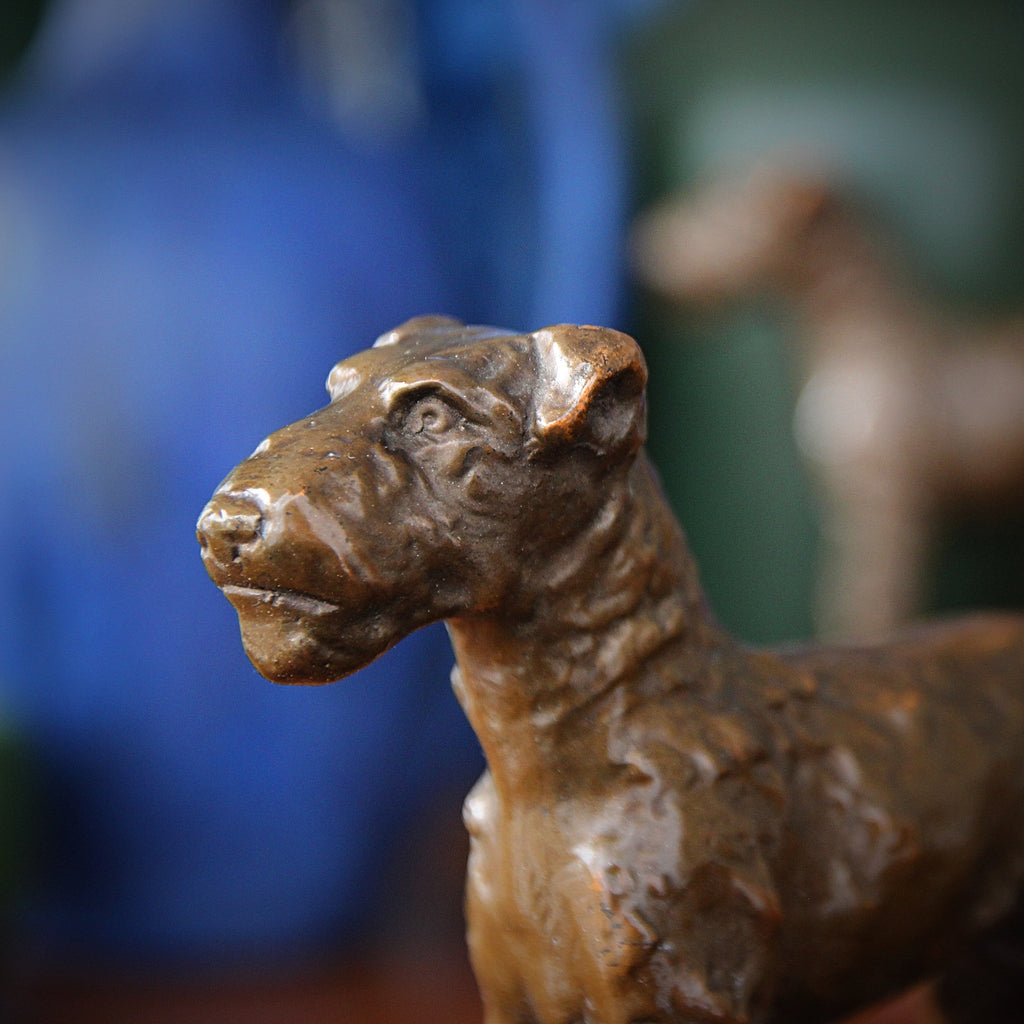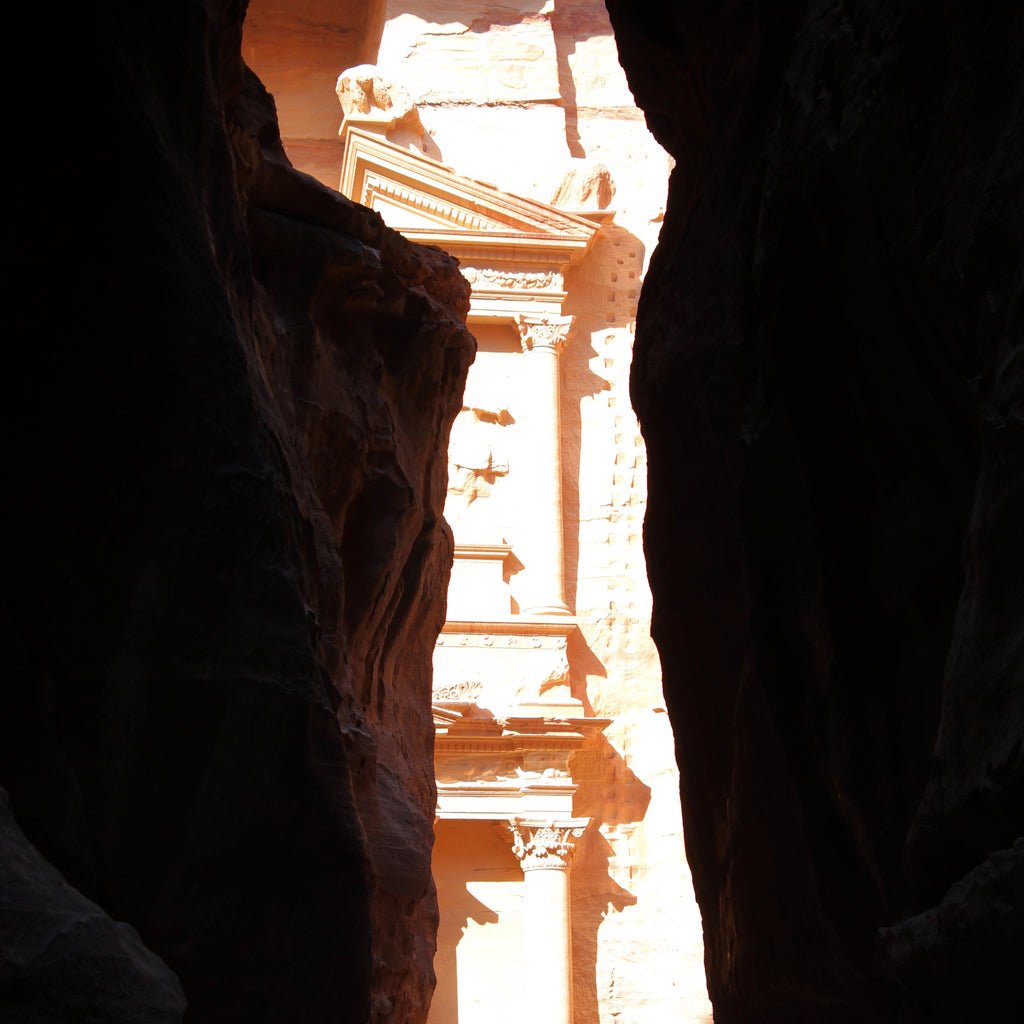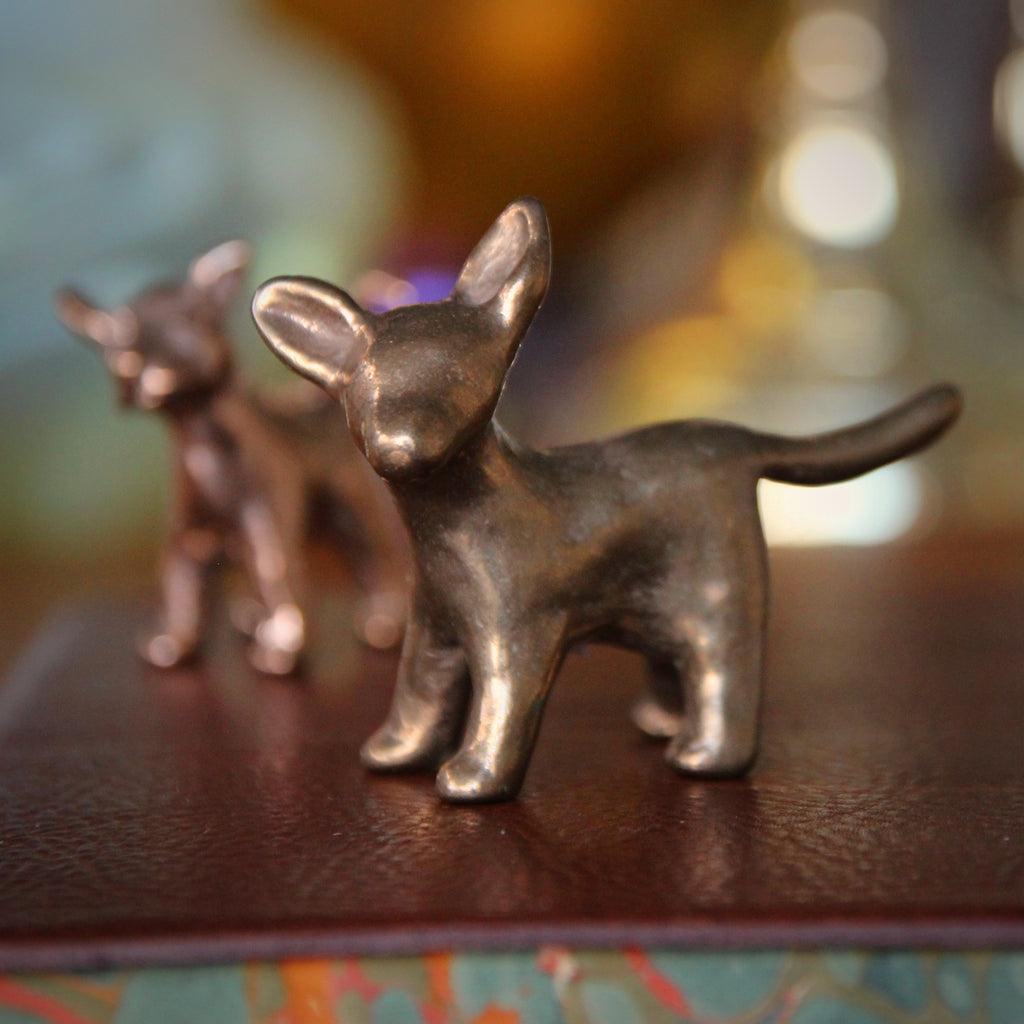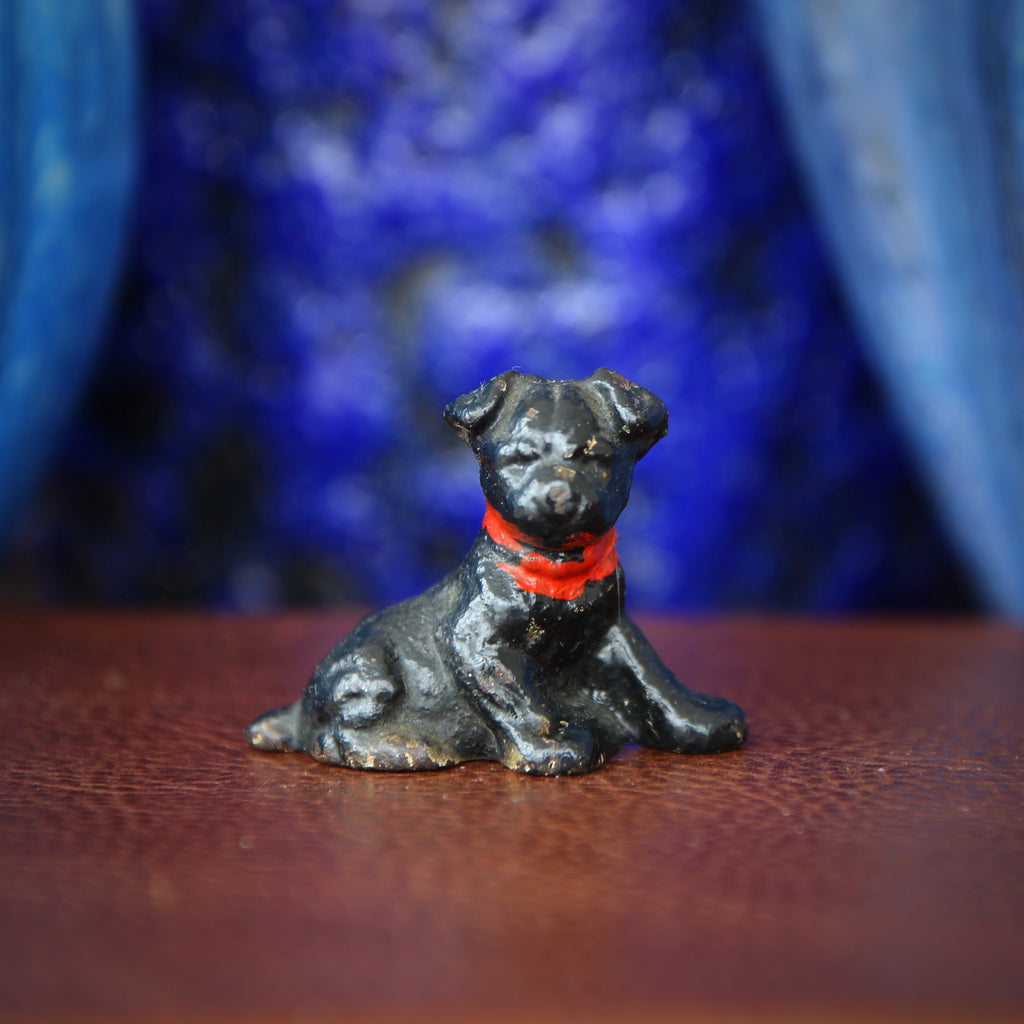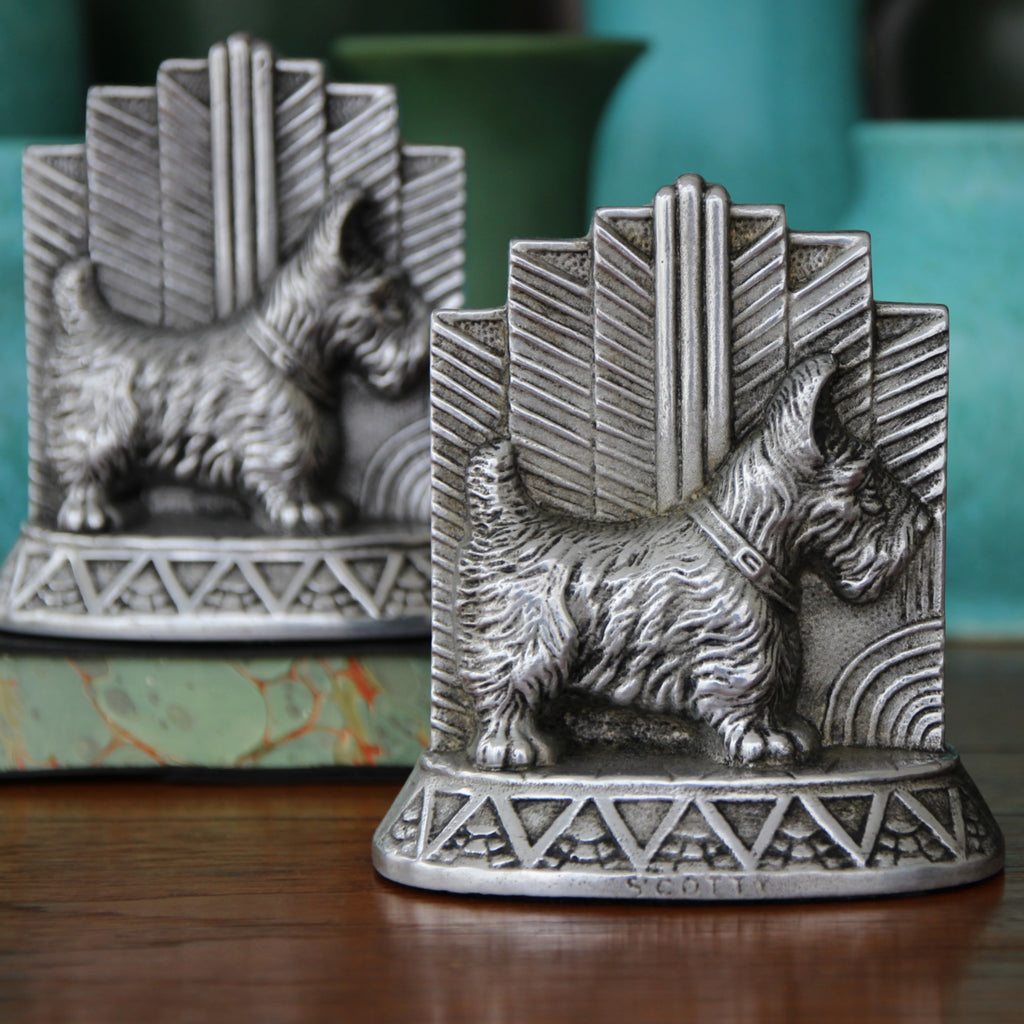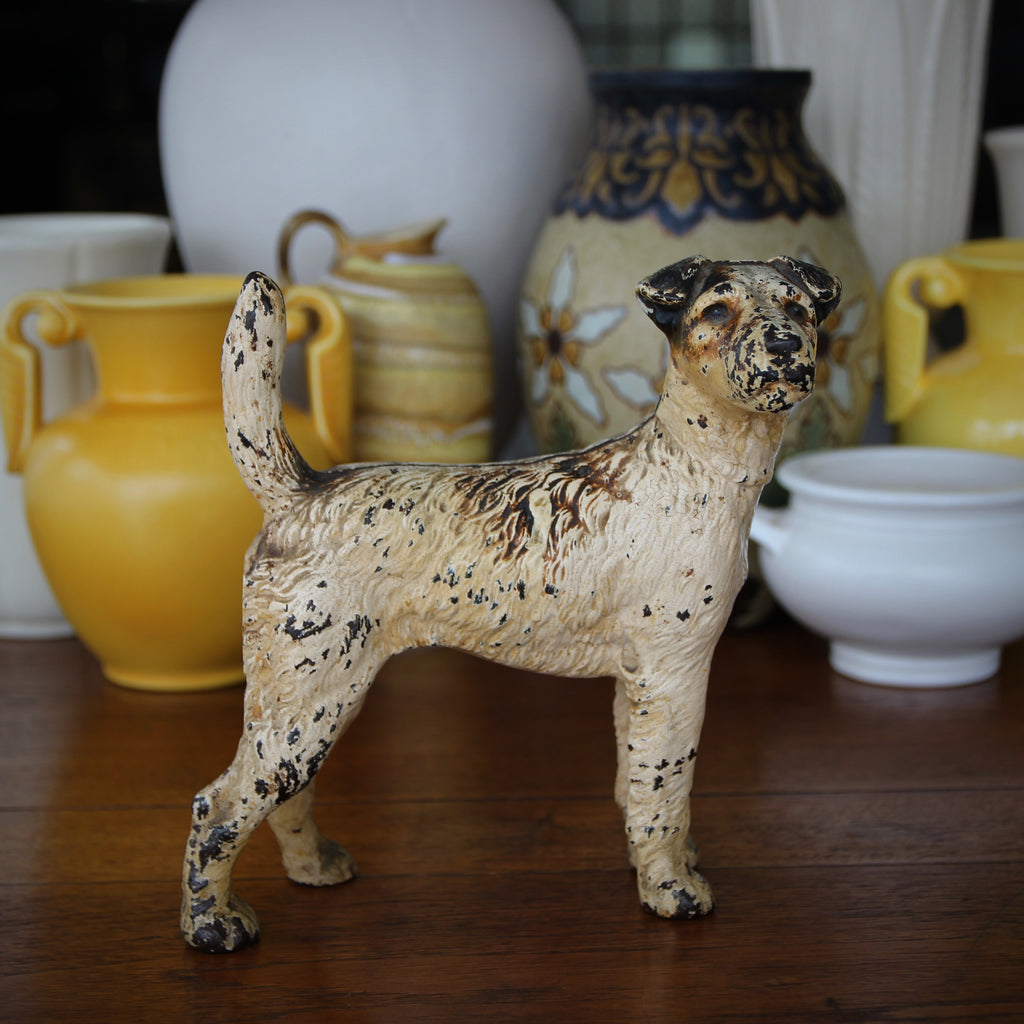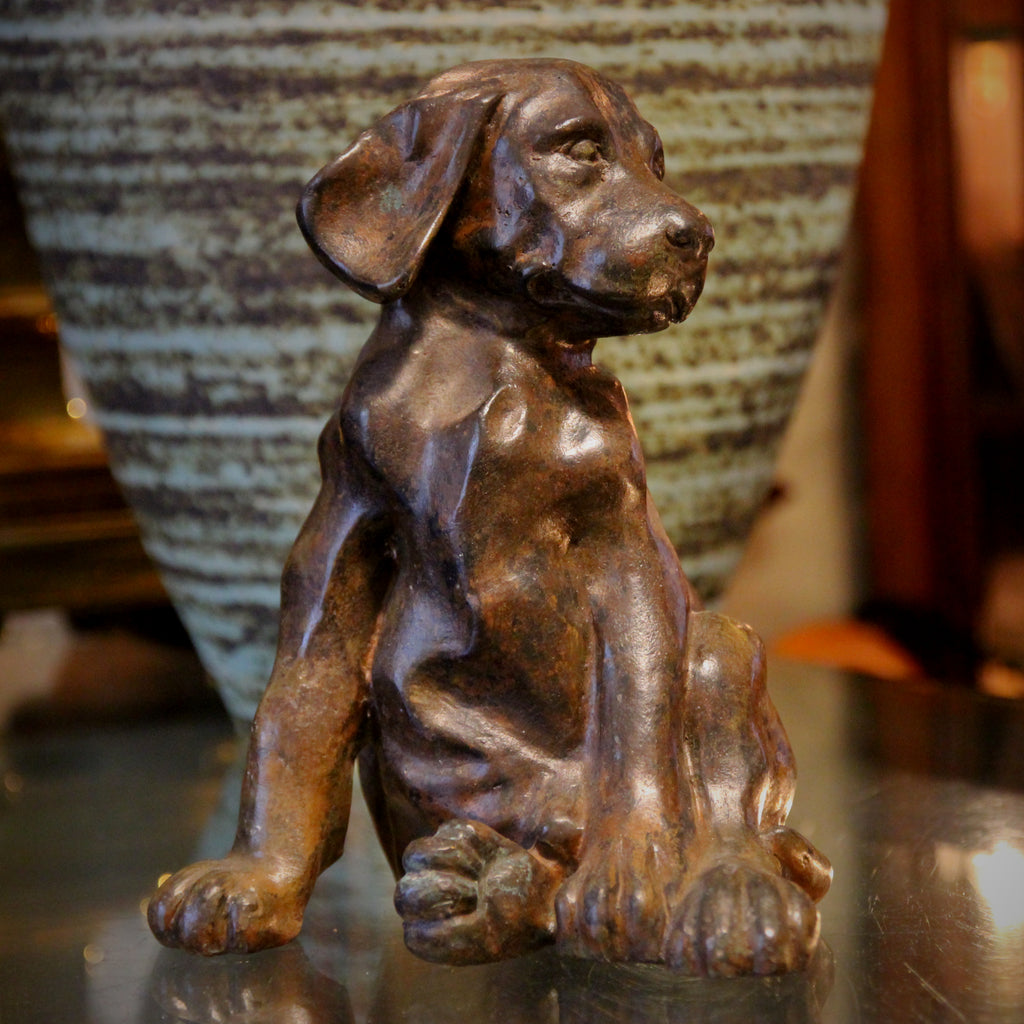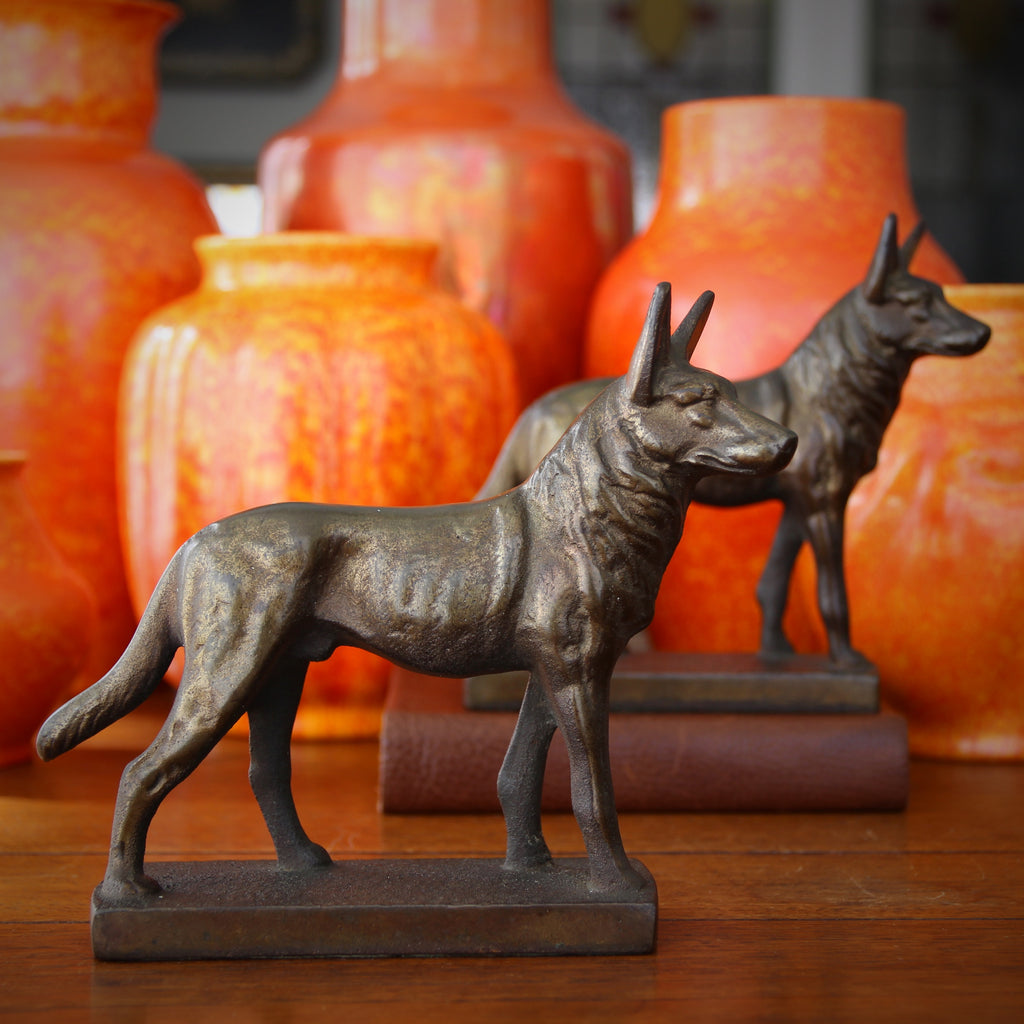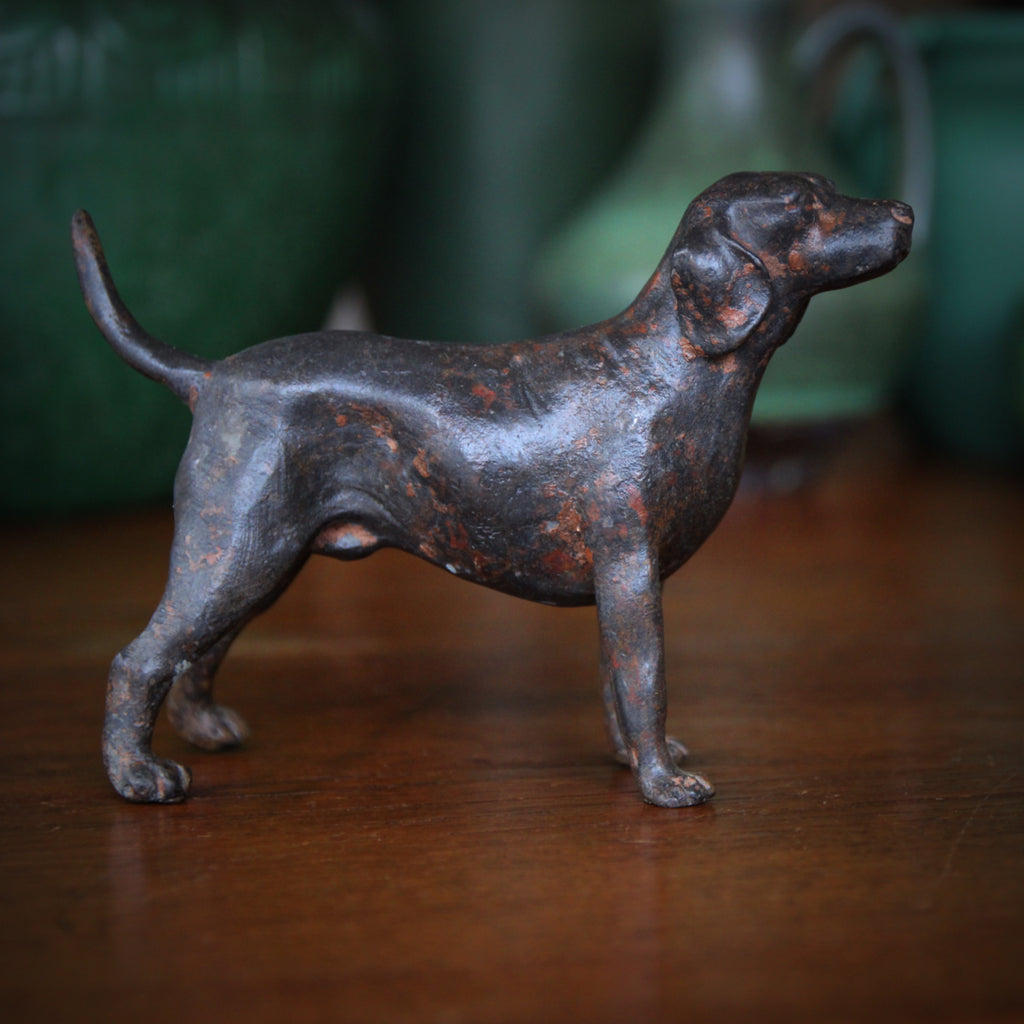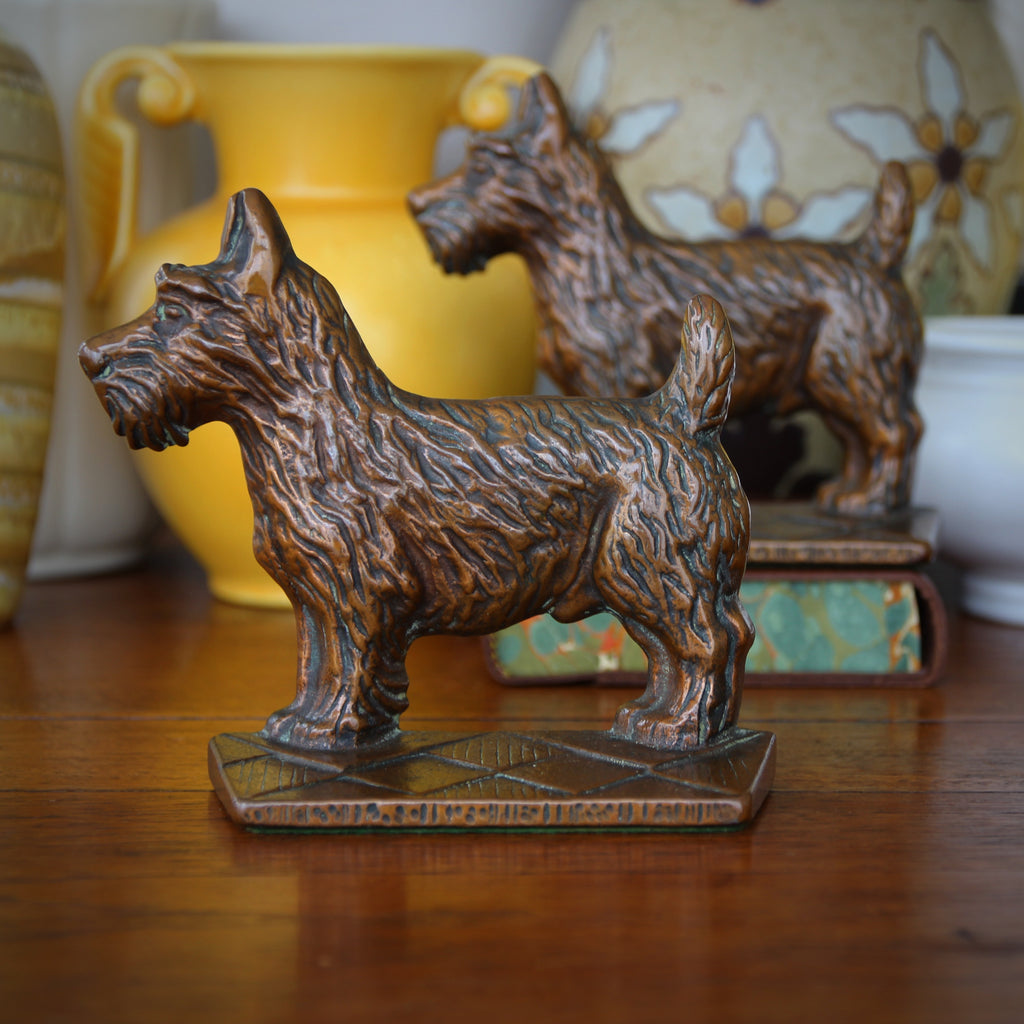JOURNAL — Dogs RSS
Our beloved shop dog, Benji, turns thirteen today! Sure, he now wears considerably more age spots. And he snores and coughs a bit more these days. But we still see glimpses of his puppy within. He runs, plays—and eats—with as much gusto as he ever has. Benji spent many a workday, for four years, sleeping in his door-less crate behind the cash wrap at 543 Hudson Street. He'd pop-out, now and then, to greet a friendly customer or her dog. Sometimes the shop bell on the door would (inexplicably) catch his attention. But, by and large, Benji was the single LEO Design staffer granted a permanent rest break. He could lead-the-way to the store and he knew the standard, twice-daily...
Merry Christmas
Wishing all a very Merry Christmas
—and a New Year of Peace and Contentment.
Many thanks for your support throughout the year.
Fondly, Your Friends at LEO Design.
The Dog Days of August - I
We're marking the last few days of The Dog Days of Summer (which ends today) with a sampling of our collection of handsome dogs—all currently in-stock at LEO Design.
Here is another charming pair of canine bookends. These were made in the Seventies by "Philadelphia Manufacturing Craftsman." The company was founded by the Startzman family in 1911. Initially, they fabricated metal parts for other manufacturers. In the Fifties, they added "slush-metal" bookends to their production, using old moulds which they had purchased from other bookend makers and some of their original designs. In the Seventies, they moved to Florida and continued to produce bookends.
The Dog Days of August - II
I love dogs. Especially my dog. But I do love all dogs—whether real, painted, sculpted or photographed. I also love books. And I love sculpture. Thus, it will be no surprise, that bookends are a large and cherished part of the collection at LEO Design. Bookends tick many boxes for me. The "Golden Age of American Bookends" flourished between the wars, in the Twenties and Thirties. This is the era in which art and good taste, combined with accelerating industrial mass production, resulted in the country's biggest and most-varied output of excellent bookends. Cast iron was the most common material employed. Solid bronze was used, to a lesser extent. Hollow cast spelter (white metal) was used sparingly (though it would...
The Dog Days of August - III
This quirky little pet brings with him a touch of whimsical charm. Charismatically sculpted and cast in polished bronze, his feet reveal a little secret: the letters L-I-F-E imprinted on the bottom of each paw. "Dog's Life." The phrase was coined in the 1500's to refer to an unhappy and miserable existence—such was the lot of dogs at the time. Today, however, most dogs have a rather charmed existence—at least my pup, Benji, does. I wish for the day when all dogs (and cats and birds) can enjoy such a wonderful dog's life.
The Dog Days of August - IV
The "Dog Days of Summer" are upon us. This year, they occur from 3 July through 11 August. As we count-down the last four days of the season, we'd like to share some of our favorite canines, now in-stock at LEO Design. Sirius—called "The Dog Star"—is the brightest star in the sky. Astronomers have noted and tracked it for thousands of years. They charted its annual appearance and movement through the skies and, eventually, began to anticipate when it should return . Dies Caniculares ("The Dog Days") begins when Sirius makes its first appearance on the horizon at dawn (this year, 3 July). By coincidence, this is the hottest time of the year (in the Northern Hemisphere). Ancient Greeks and Romans...
Murray the Outlaw of Falahill
Murray the Outlaw of Falahill (1940-1952) was President Franklin D. Roosevelt's beloved Scottish Terrier. He was named after one of the president's Scottish ancestors. But he was best known by his nickname, Fala. He was FDR's constant companion—usually to be found curled-up in the same room as the president. He even travelled with Roosevelt. Fala was an American institution. He frequently was mentioned-by-name in the press. And, during the Battle of the Bulge in World War Two, "Fala" became the secret code word for American soldiers to identify themselves to their comrades. At the moment Roosevelt died in Warm Springs, Georgia, on 12 April 1945, Fala—who had been lying quietly in the corner of the room—jumped-up snarling and barking....
Light My Fire
In the days before electric ignition, matches were a common and necessary household implement—in the kitchen, in the dining room and at the fireplace. "Strike-anywhere matches" needed a safe and attractive container for safekeeping (sometimes called a "match safe"). As strike anywhere matches were combustible (and could, theoretically, be ignited if rubbed together), they required fireproof containment (in a vessel as air-tight as possible). And, because such a match holder was on prominent display on the mantelpiece, it should be attractive, too. This heavy cast iron match holder was made in the third quarter of the Nineteenth Century. It still retains its original black and golden paint. And the gold paint is richly-aged—never to be confused with the glitzy "shiny...
Twelve Years of Love
It was the best of times. It was the worst of times. Here's the story. Twelve years ago—it was a Saturday afternoon, 23 March 2013—my husband, Bob, called me. I was in the shop on Hudson Street. "Can you come to see a puppy I found?" He was in a different shop, on Christopher Street, a couple of blocks away. He had just found a delightful little apricot Miniature Poodle. We had casually discussed expanding our family (with a dog), but had taken no concrete steps to make it happen. I left the store in the capable hands of two employees and rushed over to the shop. I, too, fell-in-love. Not wanting to be rash, I suggested we put...
Playful Pup
How wonderful to wake-up, Christmas Morning, to a playful little puppy waiting under the tree. While I would strongly discourage giving a real puppy as a gift (unless it were properly planned), I do endorse this little silver-plated music box which plays Brahm's Lullaby (published in 1868). Wind him up and enjoy Brahm's most famous tune.
Too Cute
Notorious curmudgeon, W. C. Fields, advised actors to "Never share the stage with animals or children." They are just too darn cute!
That's true for this pair of cast iron bookends, made in the Twenties or Thirties. A pair of watchful terrier puppies—simultaneously slouchy and attentive—are ready to hold-up your books or decorate your mantelpiece. The bookends are heavy. However, they do not have traditional "flat backs" which most bookends do. So these bookends are most effectively used holding-up thick and heavy, hardback tomes—which don't lean much, they just need to be kept upright.
The Dog Days of Summer - IX
We've spent the last few days—during the Dog Days of Summer—sharing a few of our favorite dog-related items, now available on the LEO Design website.
Let's end our parade of playful pups with this duo of eager Scotties—a pair of bookends made in the Twenties or Thirties. Beautifully cast—with handsome detail—and patinated with a rich bronze finish. A verdigris bronze patina suggests grass growing around the fence. Who among us wouldn't delight at coming-home to such a joyful, loving pair of loyal friends?
The Dog Days of Summer - VII
This vigilant terrier will stay his post all day long—while also holding-open your door. He was cast in iron and hand-painted by Hubley in the early Twentieth Century. Hubley was founded in 1894 in Lancaster, Pennsylvania. They made toys and decorative objects including bookends and cast iron doorstops. In time, they produced cap guns and are best known for making collectible scale models of automobiles after World War II. This terrier can still hold-open a door. He would also look terrific on a mantelpiece, on a desk or guarding a windowsill.
The Dog Days of Summer - VI
In "The Olde Days," cigarettes and the sporting life went hand-in-hand. Thus we have here a cast brass ashtray of two English birddogs, emerging from the water, in pursuit of their assignment: to gently retrieve their master's (or mistress's) birds. The bas relief sculpting is nice: interesting, detailed, full of energy. And one need not smoke to make use of this English brass tray! At bedside it would make a great place to keep one's rings or cufflinks—or perhaps a supply of collar stays. On the desk, it could hold one's clips or coins. And, at the front door, it's a great place to stash one's keys—from where one will always remember where to retrieve them. And, for those who smoke,...
The Dog Days of Summer - V
We're spending a few days—During the Dog Days of Summer—sharing a few of our favorite dog-related items, now available on the LEO Design website.
This little fellow—a cast iron pup—is painted black and trimmed with a red bow. It was probably a child's collectible toy in the Teens or Twenties. His slouchy demeanor and attentive gaze are captivating—and oh, so cute.
The Dog Days of Summer - IV
Over the years, I've bought and sold hundreds of pairs of bookends. A good percentage of these have featured dogs. And a good number of those dogs have been terriers. And, yet, I have never come across this pair of bookends before.
I love the sculpting on these bookends: the dog is handsome, alert, and inquisitive. The sculptor has captured perfectly the attitude of a terrier. The color is rich and waxy. And the mark on the back—one I have not encountered much—tells us that this pair of bookends were made in New York. There were some foundries in New York City, though most of the country's brass foundries were found in Central Connecticut.
The Dog Days of Summer - III
I've always loved the Aesthetic Movement. The crisp, handsome graphics—sometimes with a touch of Asian influence—is the elegant predecessor of both the Art Nouveau and the Art Deco movements. Shown here, a Wedgwood English Aesthetic Movement ceramic plate. The plate "blank" was decorated with a sepia-toned "transfer" pattern—a common manner of applying detailed decoration to ceramics in the Nineteenth Century. It allowed the manufacturer to print the patterns (on paper or film) rather than require each plate to be hand-painted. I have not seen other plates like this one, but I am guessing that the original set of plates may have sported a variety of different dog- (or hunting-) inspired scenes.
The Dog Days of Summer - II
We're spending a few days—during the Dog Days of Summer—sharing a few of our favorite dog-related items, now available on the LEO Design website.
When it comes to Hollywood Style, few dogs can beat a Terrier—especially a Scottie. This fabulous pair of American Art Deco bookends are made of "Silverlite"—a proprietary material of the Russel Studios in Chicago. Our Scottie, proudly alert, stands before a magnificent Art Deco architectural backdrop. The bookends—the architecture, the silver color, the Scottie himself—scream "stardom!"
The Dog Days of Summer - I
We now find ourselves in "The Dog Days of Summer." This year, the period spans from 3 July through 11 August—the period during which Sirius the star appears on the morning horizon and travels its visible path across the sky.
Sirius is the brightest star in the night sky. Its name comes from the Greek, meaning "glowing" or "scorching." It keeps company with a larger cluster of stars, a constellation, called Canis Major (meaning "The Greater Dog"). For millennia, humans have noticed, studied and tracked this special star—often attributing great power to this celestial fixture.
The Sporting Life - IV
If you can't get enough of the outdoor sporting life—or if you only wish to experience it from comfortably indoors—this English cast brass ashtray will bring a touch of Nature onto your desk, counter or coffee table. Two bird dogs, Setters, emerge from the water. Let them bring their bold, outdoor energy into your home.
The Sporting Life - III
A country squire works his fields, shotgun in-hand and bird dog at his side. This lithographic print, published in 1898, is the work of Sir William Nicholson, RA. It was published in London as part of a bound portfolio titled An Almanac of Twelve Sports. It is framed in a rustic "woodland" carved frame—a decade or two older than the print itself.
The Sporting Life - II
What makes a good bird dog? First and foremost: obedience and an eagerness to please. A natural desire to retrieve is a must. They need to be athletic, have stamina, and be good in the water. A good nose is important. And a "soft mouth" means that they will inflict minimal damage on the retrieved game.
Traditionally, the best breeds have been "Retrievers" (naturally): Labradors and Golden. Spaniels, Pointers and Vizslas are also good. But, at the end of the day, the best bird dog will be the one who enjoys the activity and is compliant, obedient and willing to perform.
The Sporting Life - I
Is it the Autumnal Damp? Or is it the The Crown? I'm not a hunter, but I've been thinking a lot about hunting dogs lately. In preparation for Season Six of The Crown, we decided to go back to Square One: Season One, Episode One. Gorgeous Scottish vistas, royals mucking through the damp, and, naturally, lots of dogs. The series makes it quite clear: if one could not handle the mess of Nature, one probably could not handle the mess of The Family. Anyhow, all this bingeing has me thinking much about "Country Sport" (as the British call it).
Terriers
Terriers comprise a wide and diverse range of dogs, originally selectively-bred for particular working or sporting purposes. Their sizes span from the smallest, at two pounds, to the largest, tipping-the-scales at 130+ pounds. In earlier days, these purpose-built breeds tended to stay fairly well-isolated geographically—that is, genetically distinct, not interbred with other regional terriers too much. The farmers, hunters and business owners who kept these dogs tended not to travel as far (with their dogs) as people do today. Before modern transport, people (and their dogs) tended to keep within tighter geographic circles. For this reason, in Scotland alone, we see many well-known varieties of terriers which were developed over the years: Scotties, West Highland Terriers, Cairn Terriers, Skye Terriers, Dandie Dinmont...
In Search of the Pharaoh's Daughter - XVI
We started our short trek into Petra rather early in the morning—hoping to avoid the heat, dust and crowds. We were only partially successful. It seems that Petra is high on many people's "Bucket Lists." And the mid-day heat is oppressive. Every step on the way into the complex requires the same step taken on the way out. The sandstone mountains and rocky outcrops create a beautiful, otherworldly atmosphere. The anticipation builds as we get closer to Petra. Along the way, we begin to see tombs—both modest and ambitious—like the "Obelisk Tomb" (ambitious) shown above, carved out of the solid rock of the sandstone cliffs, probably in the First Century AD. Bodies of the aristocratic family members would have been...
The Dog Days of Summer - Part X
Let's end our parade of Summer "Hot Dogs" with this curious little pup—a cast bronze canine, a symbol of "Puppy Love." For on the bottoms of each of his paws are found the letters L, O, V & E. Give him to a sweetheart. Or keep him for yourself, a reminder of that special someone who once (inexplicably?) haunted your consciousness. This little rascal—impressionistic though he is—radiates playful curiosity and energy.
The Dog Days of Summer - Part IX
We are counting-down the last of the "Dog Days of Summer"—a forty day period scheduled to end on 11 August. To commemorate these waning days of Summer, we'd like to share some of our favorite "canines" from the LEO Design collection. Consider sending one as a gift to your favorite dog lover.
Our little pup, shown above, is as winsome as he is determined. Formed of cast iron, he is painted—mostly black, but finished with a red bow. Click on the photo above to learn more about him.
The Dog Days of Summer - Part VIII
We are counting-down the last of the "Dog Days of Summer"—a forty day period scheduled to end on 11 August. To commemorate these waning days of Summer, we'd like to share some of our favorite "canines" from the LEO Design collection. Consider sending one as a gift to your favorite dog lover.
Scotties—formally called Scottish Terriers or Aberdeen Terriers—were developed in Scotland as "ratters"—dogs bred to capture and kill rats around the home or on a farm. The first reference to them was in literature published in 1432. In the Seventeenth Century, English painter Joshua Reynolds included a Scottie in a portrait of a young girl.
The Dog Days of Summer - Part VII
The Russian Wolfhound, despite its imperial bearing, is no palace lap dog. In fact, they were originally developed to hunt wolves with their human masters—a grueling and dangerous activity, indeed. The breed was developed in the 1500's, a cross between the Saluki and other European "Sighthounds." A "sighthound" is a type of dog which hunts with vision and speed (as opposed to "scent hounds" which track game with their advanced sense of smell). Russian Wolfhounds have a wavy top coat and a thick undercoat to keep them warm in the winter (which falls away in the warmer months). Russian Wolfhounds were so beloved of the Tsars that Russian subjects were not allowed to purchase one. The only way one could...
The Dog Days of Summer - Part VI
A "naughty dachshund" is featured on this pair of cast metal bookends, made in the Seventies. A bronze alloy is moulded in this highly three dimensional figural—a stack of books, with the top volume being gnawed by the problem pooch. They are finished with an antique golden bronze patina and stand ready to hold-up your collection of favorite tomes.
The Dog Days of Summer - Part V
Before the days of residential air conditioning, windows were left open—and doors required "fixing-open," to prevent them from slamming-shut in a breeze. A wooden wedge-shaped offcut was all one needed to stop a door. But how much fun is that? Metal foundries stepped-in to produce a wide variety of doorstops (and other metal household items), often highly decorative). Hubley Manufacturing was one such company. Founded in Lancaster, Pennsylvania, in 1894 by John Hubley, the company made a range of decorative sand-cast iron doorstops, some of them modeled after different breeds of dogs. The process started by carving an excellent wooden model—complete with details like fur, musculature and facial features. The model was then pressed into a tray of sticky sand,...
The Dog Days of Summer - Part IV
We are counting-down the last of the "Dog Days of Summer"—a forty day period scheduled to end on 11 August. To commemorate these waning days of Summer, we'd like to share some of our favorite "canines" from the LEO Design collection. Consider sending one as a gift to your favorite dog lover.
Speaking of the Dog Days, this "Slouchy Puppy" really hits the mark. His sculptor imbued the form—cast brass finished with a rustic verdigris patina—with a slouchy puppy's energy (or lack thereof). He could be used to hold-up some hardbacks. But he was made to sit on your coffee table, bookshelf or nightstand—relaxed, attentive and always ready to join you on the next adventure.
The Dog Days of Summer - Part III
This pair of antique bookends—I've had a few of them during LEO Design's 28 years in business—has always been a customer favorite. Handsomely sculpted, proudly alert, these Shepherds are noble, fit and fine. They were made in the Twenties, the heyday of German Shepherd Superstar "Rin Tin Tin." Rin Tin Tin was a German Shepherd who appeared in 27 Hollywood films. He was immensely popular, worldwide, and ignited an interest in German Shepherds as American household pets. An American soldier had discovered him, his mother and four littermates in a bombed-out kennel in France (1918). The soldier rescued the dogs giving four of them away. But he kept one male and one female puppy for himself—eventually sneaking them aboard his...
The Dog Days of Summer - Part II
We are counting-down the last of the "Dog Days of Summer"—a forty day period scheduled to end on 11 August. To commemorate these waning days of Summer, we'd like to share some of our favorite "canines" from the LEO Design collection. Consider sending one as a gift to your favorite dog lover.
"Man's Best Friend" is certainly apt—to anyone who has had and loved a dog. This sculpted bird dog—standing quietly attentive—should remind any sportsman of a favorite hunting companion. He's cast in brass and finished with a rusticated verdigris bronze patina. He'll stand loyally on your desk or bedside table—awaiting the signal to fetch your game.
The Dog Days of Summer - Part I
We think of "The Dog Days of Summer" as those mid-Summer days—hot, humid and still—when we should follow the example of our canine friends: lie still in the shade and drink lots of water. And, perhaps this is true.
But the origin of the term "Dog Days" actually refers to the "Dog Star," also called "Sirius." Sirius is the second brightest star in the sky (after our Sun) and is part of the constellation cluster "Canis Major." The Dog Days begin when one can observe Sirius rising along the horizon at dawn (usually around 3 July). The period lasts about 40 days (usually to around 11 August).













